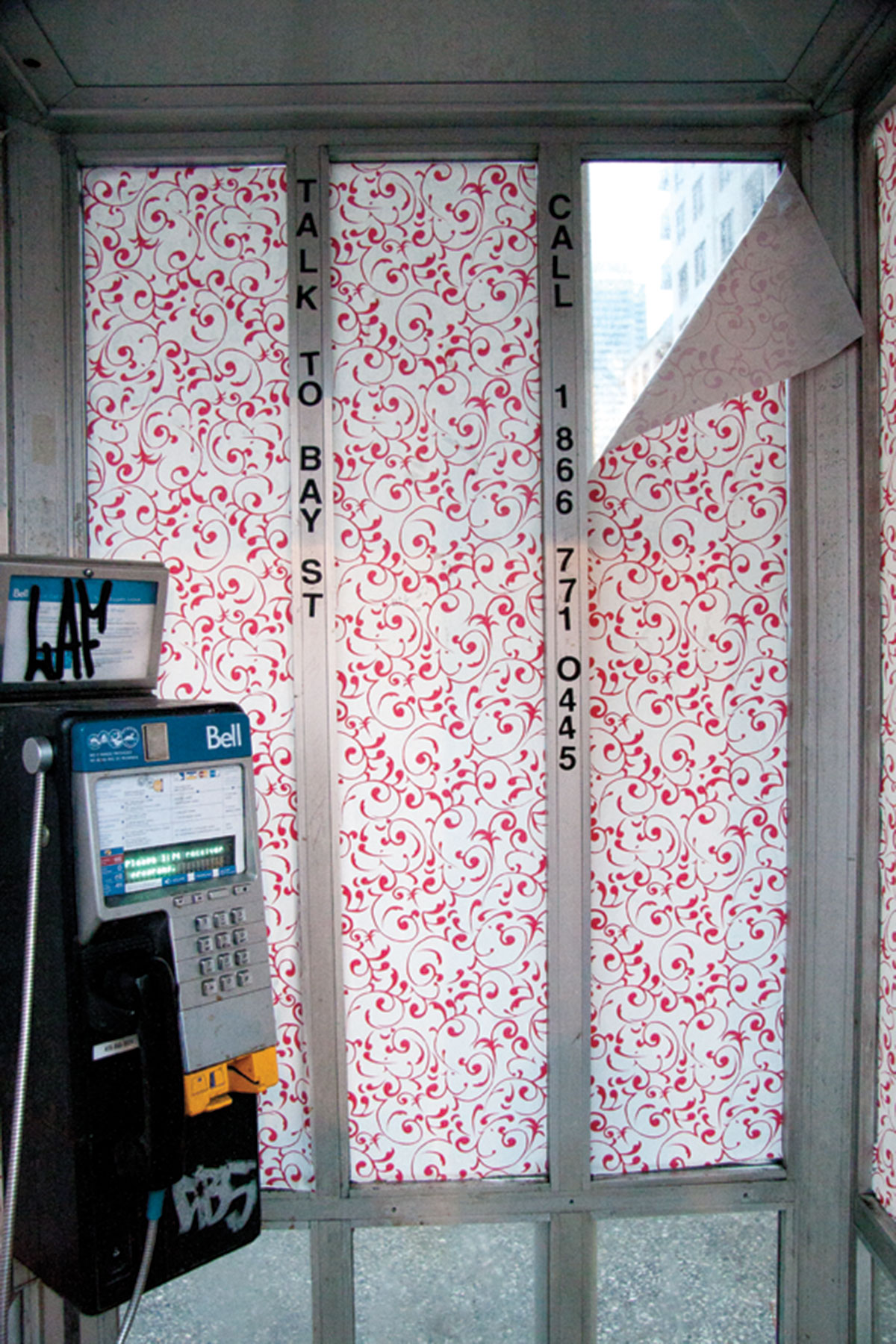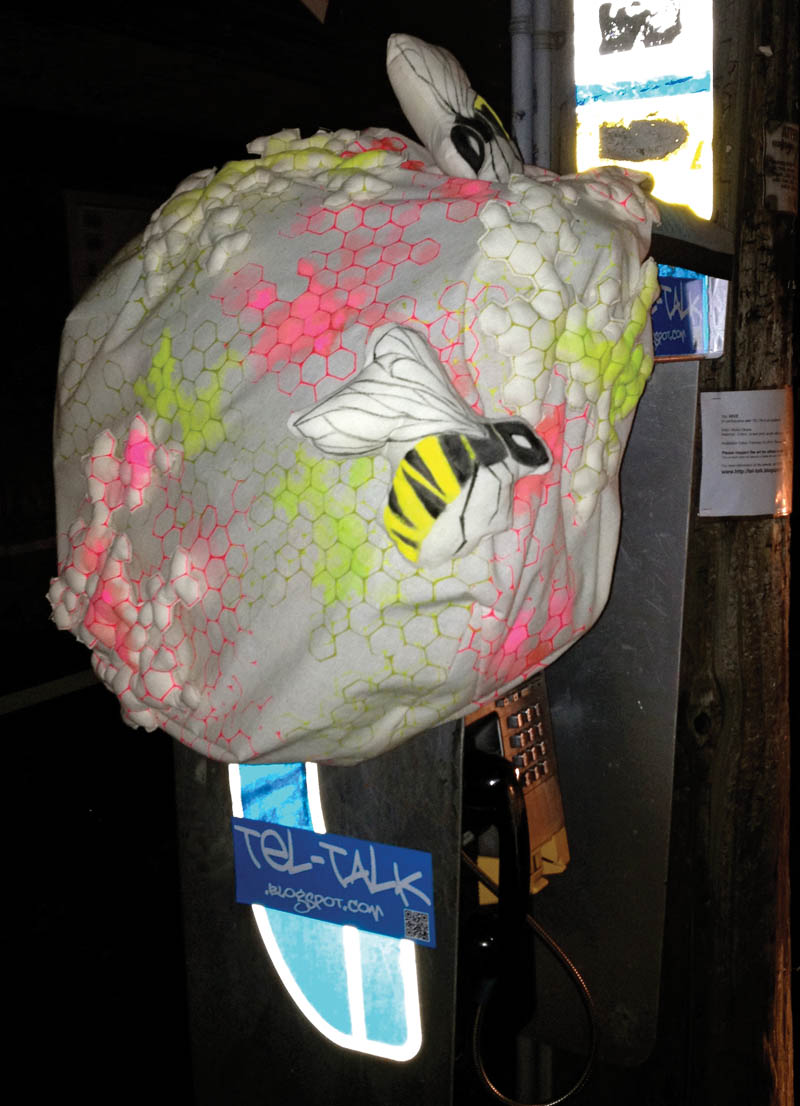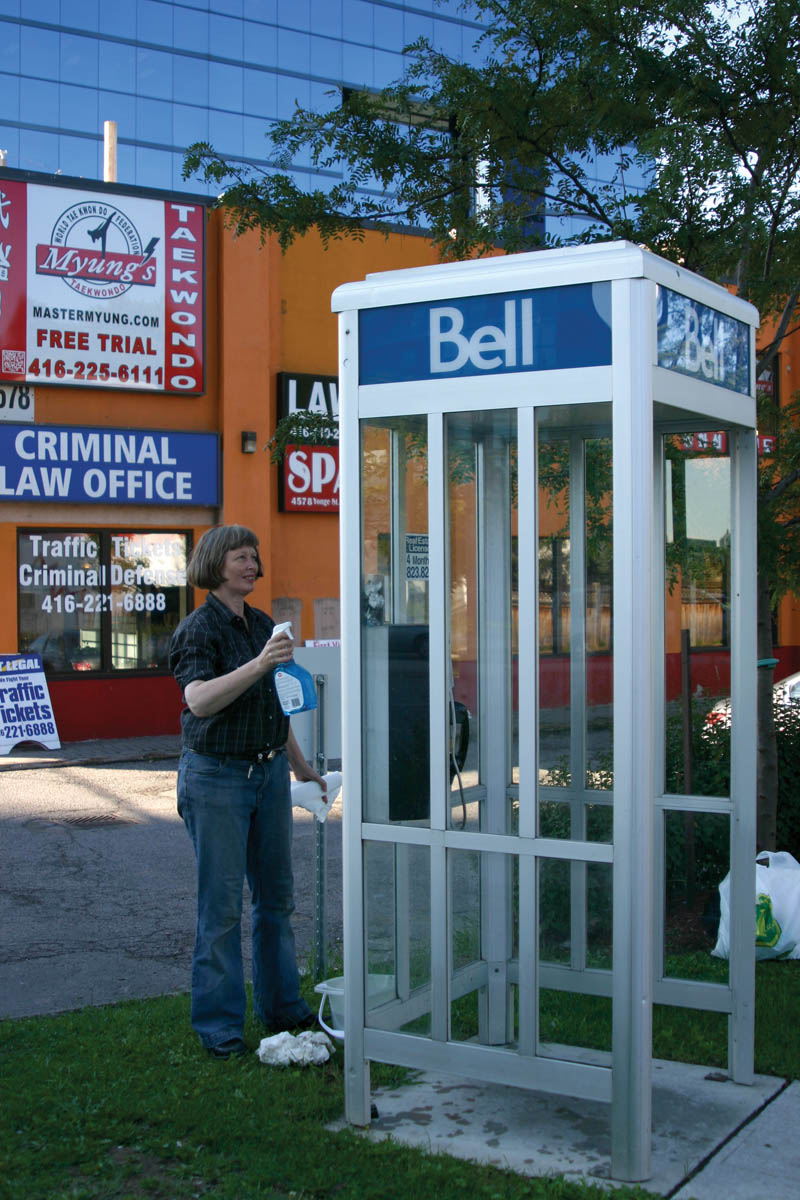
When Paola Poletto first started spreading the word about Tel-Talk—an art project she co-created aimed at turning humble Toronto phone booths into street art—she was surprised by the reactions she received. “Are there any of those left? ” friends asked of the increasingly antiquated conduit of verbal communication, their eyes looking right through the enclosures’ transparent panels.
But pay phones haven’t given up their place in the city just yet, and watching artists give them another chance to coax a conversation out of passersby is part of what Poletto loves about Tel-Talk. “I was quite interested in the idea of street furniture and its place in the city, and how it changes over time,” she says. “It’s a blurry space in that it’s public and private at the same time, both physically and in its essence.”
Tel-Talk’s accessible installations began to appear in various locations across the city last fall, with the final one appearing in June. Some pieces are more noticeable than others, like Julie Voyce’s Flower Arrangements, where small vases of handmade blooms were left perched atop the telephones. Others are less subtle, like Sheila Butler’s depiction of the iconic transformation of Clark Kent into Superman. “I heard one woman say, ‘It’s about time Superman got to our street corner!’” Poletto says.
To further explore form and function, medium and message, the project also features the writing of ten authors and poets. Their work—focusing on change and the passing of time, and emphasizing space and privacy—appears in brief on a Tel-Talk blog, and many of their pieces also are included in a recently published eponymous companion book alongside images of the installations.
The Tel-Talk curators, which also include Liis Toliao and Yvonne Koscielak, are acutely aware that their project likely will cause nostalgic tinglings among both artists and art fans—sparking memories of a pay phone that once placed an urgent call, gave shelter from the rain, or offered a sense of privacy for a special moment. They also know many will experience these memories while their pockets beep and buzz with mobile phones—the very devices to blame for the phone booth’s slow waltz toward obsolescence.
Much like the pay phone itself, the future of Tel-Talk is uncertain. Poletto sees the potential for other artists to build on the foundation she and her collaborators have laid. “This just seems like the sort of thing that could have legs of its own, whether the art is sanctioned by Tel-Talk or not,” says Poletto. “But either way, we’ve felt satisfied that Tel-Talk has started a few conversations.”







